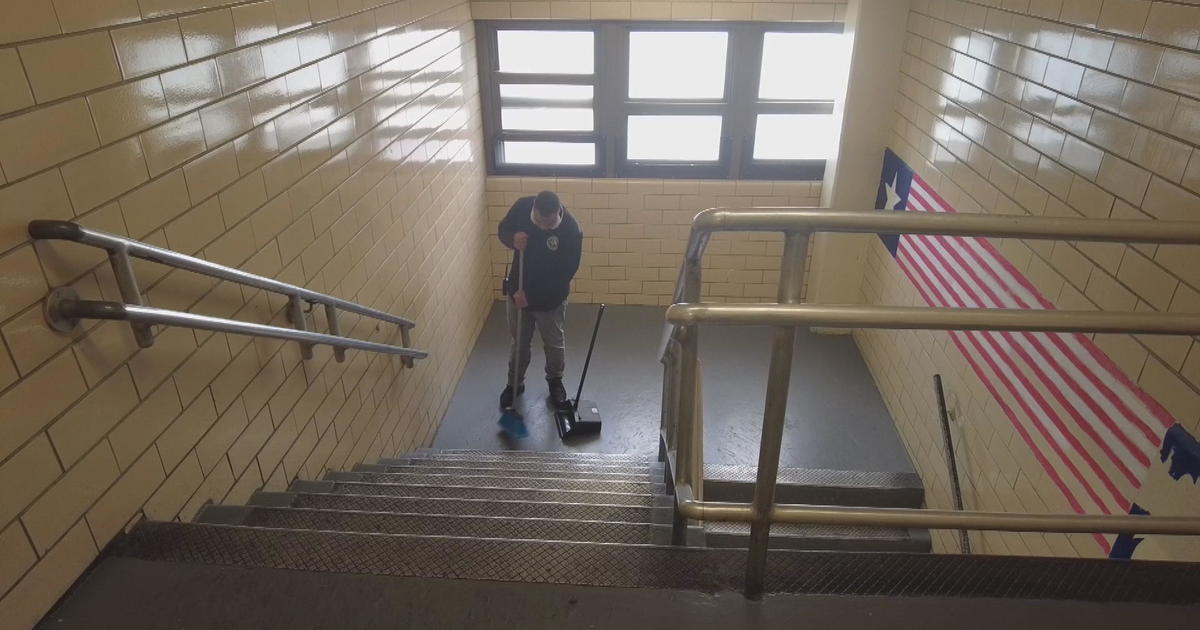Another 3 Million Americans File For Unemployment Benefits Last Week, Bringing Total To 36.5 Million
PHILADELPHIA (CNN) -- Millions of Americans are relying on unemployment benefits for their livelihoods after losing their jobs to the coronavirus crisis. Another 3 million people filed initial unemployment claims last week on a seasonally adjusted basis, according to the Department of Labor.
That brings the total number of first-time claimants to 36.5 million since mid-March. That represents 22.4% of the March labor force. America's labor force shrank in April, as the crisis worsened.
It was the eighth week in a row that the number for initial claims decreased after peaking at 6.9 million in the final week of March. Economists say this is relatively good news because it means things aren't getting worse.
Download The New And Improved CBS Philly App!
Initial jobless claims are one of the most "real-time" measures of the economy available. Most economic data lags behind by weeks if not months. That's why the weekly claims data are so important during this crisis.
But now that initial claims have been falling for two months straight, economists are beginning to shift their focus to continuing jobless claims, which count people who are filing multiple weeks in a row. That number stood at 22.8, up slightly from the prior week.
A decrease in continuing claims could signal that the reopening of the economy is successful in getting people who lost their jobs from the lockdown are re-entering the labor market.
In addition, nearly 842,000 people in 29 states filed initial claims for the pandemic unemployment assistance program, which Congress created to provide benefits to independent contractors, the self employed, gig workers and certain people affected by the coronavirus. These applicants are not included in the seasonally adjusted data for the traditional unemployment program.
More than 3.4 million Americans in 23 states were receiving benefits under the PUA program in the week ending April 25, a spike of more than 2.4 million in seven days. Michigan had the highest number of residents filing initial claims and receiving payments under the pandemic program, followed by California.
According to the Bureau of Labor Statistics' monthly jobs report, America lost more than 20 million jobs in April alone, pushing the unemployment rate to 14.7%. Unemployment claims to not equal lost jobs, as the two data points are based on different surveys.
Government spending soars
Spending on unemployment benefits has skyrocketed to more than $100 billion so far this fiscal year, a huge jump from only a few weeks ago, according to Treasury Department data.
Federal and state outlays totaled just under $102 billion, as of May 12, up from $12.7 billion at the beginning of March.
Nearly $37 billion has already been spent this month alone.
In April, the federal government paid out nearly $27 billion in unemployment benefits as the money from Congress' historic enhancement to the program started to flow, Treasury Department data shows.
Lawmakers in late March approved a $600 boost to weekly payments for up to four months and added 13 weeks to benefits, both compliments of the federal government. Also, they expanded eligibility to independent contractors, the self-employed, gig workers and certain people affected by coronavirus through the end of the year -- also federally funded. The measure was expected to cost about $260 billion when it was passed as part of a $2 trillion coronavirus relief package.
States, meanwhile, delivered just over $21 billion in benefits in April, up from about $4 billion the month before.
The combined $48 billion paid out in April is the equivalent of more than triple the amount distributed at the monthly peak of the Great Recession, after adjusting for inflation, according to a new report from The Hamilton Project at Brookings Institution.
Unemployment benefits offset a small portion of personal income decline in March, but roughly half of lost wages and salaries in April, according to the researchers' preliminary calculations.
As more Americans join and remain on the unemployment insurance program, spending will continue to skyrocket. The outlays to date show that states have struggled to handle the surge in claims and to implement the federal provisions, said Ernie Tedeschi, an economist at Evercore ISI and former Treasury official.
"States have been slow to integrate the new emergency payments for regular unemployment insurance beneficiaries, and states have been super slow in implementing the brand new PUA benefits," said Tedeschi. "This shows states have catching up to do."
The-CNN-Wire™ & © 2020 Cable News Network, Inc., a WarnerMedia Company. All rights reserved.



